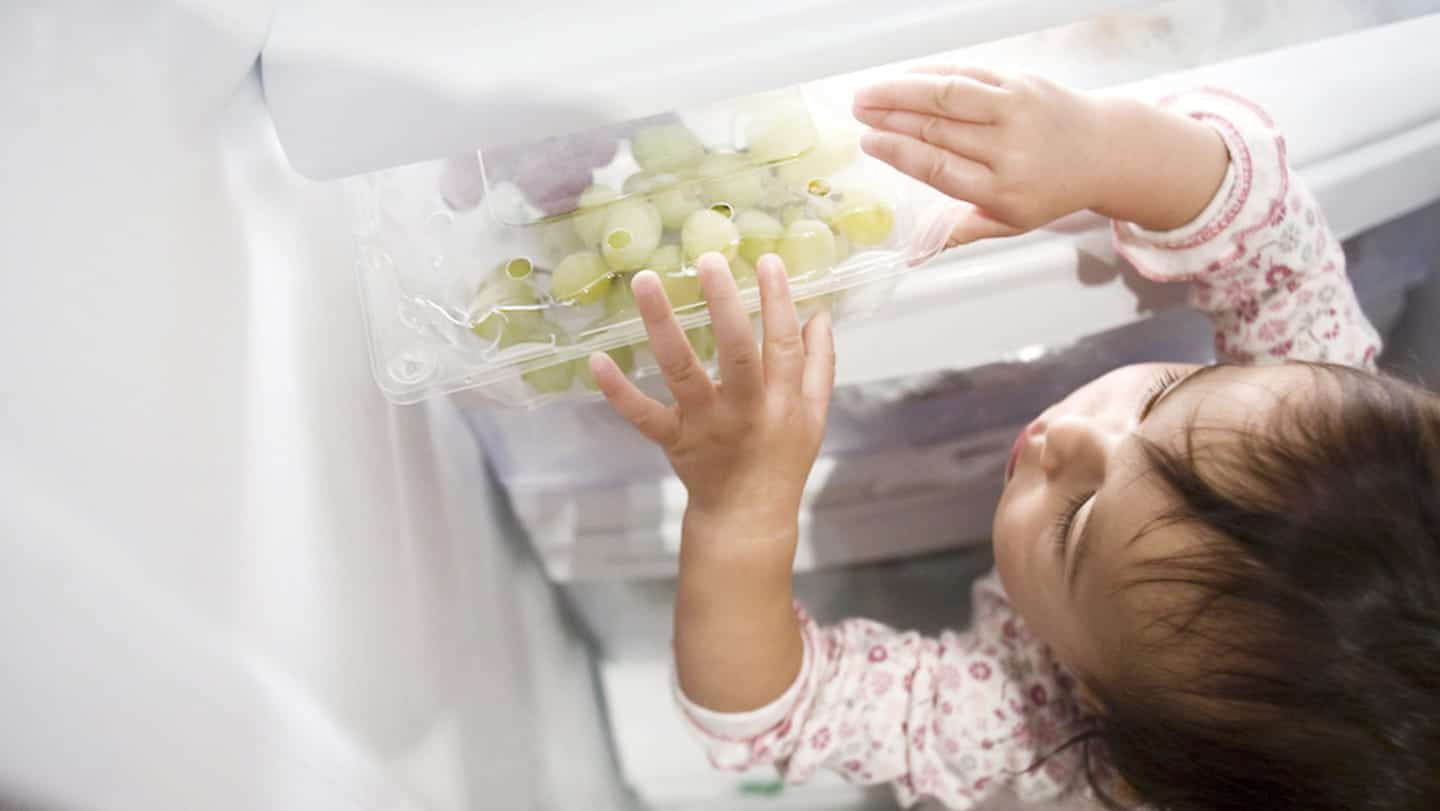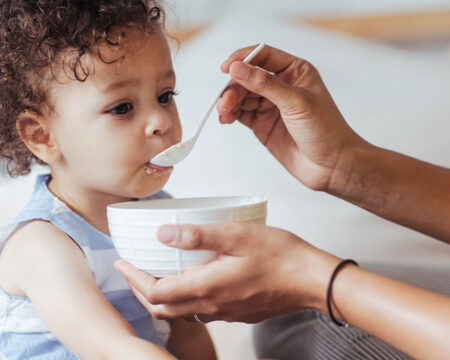Toddler food safety: 10 choking hazards every parent should be aware of
But they can often be served in safer ways.

This post originally appeared on Yummy Toddler Food. It was previously published on June 20, 2018. It has been updated.
It’s hard not to worry about whether the foods we feed our kids are healthy. While I usually suggest relaxing about most of it, I do know that paying attention to the foods that can be choking hazards for toddlers can alleviate a lot of stress—and potential issues come mealtime.
We followed the baby-led weaning method in our house, so I was always pretty comfortable with letting my girls try new foods. That said, it was clear to me from the start that there are some textures and foods that are just plain tricky for little kids to handle. And then when my oldest was 3, she got a small piece of tortilla chip stuck in her throat because she didn’t chew it well. She didn’t choke, per se, but she was wildly uncomfortable and scared—and that was all I needed to be much stricter about choking hazards for toddlers.
Foods that may be choking hazards for toddlers
Here’s a rundown of the common foods that are potentially problematic for little kids, but that can often be served in safer ways.
These are the ones I pay most attention to for kids under 4 years old, though do keep in mind the chewing ability and tendencies of your own child when serving any other foods. For example, if your toddler has a habit of stuffing a lot of food into their mouths, consider offering much smaller amounts of food at a time to help them learn to pace themselves.
Related: Confession: I’m a dietitian and feeding my daughter is a struggle
1. Hot dogs
This food is round and could potentially get stuck in a throat. Be sure to slice them in half lengthwise and then chop into smaller pieces.
2. Whole nuts
Almonds, peanut, cashews and more are hard to chew and can have sharp edges. Avoid them and opt for safer versions like nut or seed butter spread on lightly toasted bread or incorporated into a smoothie or oatmeal.
3. Whole grapes
Whole grapes are another round food that has the potential to get stuck in a toddler’s throat, so slice them vertically in half or quarters (do quarters for very large ones) so that the pieces are long and skinny and easy to chew.
Related: How to tell if your child has a feeding problem—and what to do next
4. Popcorn
Popped popcorn kernels can be difficult to chew completely and it’s very dry, both of which make it hard to chew and swallow effectively. Rice cakes can be better options for older toddlers who enjoy crunch.
5. Crunchy snack foods
This is one that you’ll need to use your judgment on, but for toddlers under 2, I’ve seen some issues chewing foods that can have hard edges like pretzels and some crackers. Opt for softer versions of these when you can and when in doubt, chew one yourself first. I suggest holding off on tortilla chips until 4 years old if possible, based on my own experience.
Related: The scientific reason why your toddler only loves mac and cheese
6. Sticky foods
Gummy candy, some gummy vitamins, taffy, gum and the like are really hard to chew and should be avoided. I also put straight spoonfuls of nut butter in this category for younger toddlers since they can sometimes be hard for toddlers to move around in their mouths. You can always thin it a little with water if your toddler likes nut butter from a spoon!
7. Raw vegetables
Raw foods like carrot sticks, celery sticks, apple slices, cucumber slices and others can be really hard for little kids to chew. You can always shred them (try shredded carrots closer to 18 months or 2 years old), choose softer varieties of apples (like Gala) and slice them super thin), or simply go with steamed or lightly cooked versions of these foods to be safe. Peeling cucumbers can help too—try them in long sticks for younger toddlers to chew on and cubes for older toddlers.
8. Chunks of meat
Cubes or thin slices of steak or even chicken or turkey can be really hard to chew, even for adults. Try shredded or ground and cooked meat instead.
Related: 10 nutrient-dense first foods for baby
9. Chunks of cheese
I have two kids who love cheese so this is something I figured out early on. Opt for shredded cheese (this is great for babies!), crumbled cheese, or very, very small cubes about the size of a pea.
10. Bread
Until a child is over 1 year old and often until they’re closer to 2 years old, cubes or sticks of bread are easy to get stuck on the roof of their mouths. Try bread lightly toasted and in very small pieces. And cut foods like pancakes and muffins into small cubes too—and offer a drink with these foods.
How to prevent a toddler choking during meals
Sit with them during meals
Not every meal may be a family meal, but toddlers still need your attention when they are eating—both so they can learn manners and proper table behavior, and so you are right there if they have trouble eating something. And eating while sitting down is an easy way to lessen the likelihood of choking.
Try a new food at home before sending it to daycare
Because you want to make sure they do okay with it first while you can pay close attention to them.
Avoid giving toddlers food in the car that could be a potential choking hazard
Stick to soft foods that you know they can easily handle, or avoid giving them food in the car altogether if possible.
Consider skipping super crunchy foods until 3 or 4 years old
Toddlers like to do everything fast, which means they don’t always chew foods thoroughly. They also like to do everything they see us grownups or their older siblings doing, so try to offer them alternatives. (We like Snap Pea Crisps as an alternative to crunchy chips!)
Follow your gut
If you’re worried about something, take the extra moment to serve it in a safer way. This doesn’t have to be an all-consuming thing when feeding toddlers, but a few simple precautions can go a long way.


